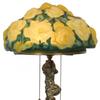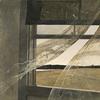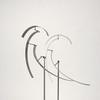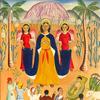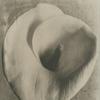GETTY RESEARCH INSTITUTE DIRECTOR THOMAS W. GAEHTGENS TO RETIRE IN 2018
- LOS ANGELES, California
- /
- May 09, 2017
The J. Paul Getty Trust announced today that Thomas W. Gaehtgens, director of the Getty Research Institute, will retire in early spring 2018 after more than a decade of leading one of the world’s foremost institutions for art historical research. After his retirement, Gaehtgens, who is 77, will return to Germany, where he plans to continue to write and conduct independent research.
“Thomas Gaehtgens’ international standing as a leading scholar has enabled him to significantly broaden the vision and reputation of the Getty Research Institute,” said James Cuno, president and CEO of the J. Paul Getty Trust. “The GRI has always been known as one of the world’s largest and finest arts and architecture libraries, but under Thomas’ leadership the GRI has become a robust, international center of original scholarship. In addition to groundbreaking exhibitions and publications, Thomas’ commitment to the digitization of the GRI’s collection, and his enthusiasm for open access tools and research databases, has put the GRI, and by extension the Getty, at the forefront of the digital humanities. He is an energizing and inspiring leader who has created a culture of collaboration and spearheaded tremendous growth in research, collecting and innovating at the GRI. I’m grateful to him for his contribution and I know we will all miss him.”
Since becoming director of the Getty Research Institute (GRI) in 2007 Gaehtgens has overseen a dramatic expansion in the Institute’s research projects, scholars department, exhibitions program, and digital initiatives in addition to the robust growth of the GRI’s Special Collections. One of his important accomplishments was to move the GRI from an institution focused primarily on Western art to one with a more global approach, supporting collaborations with Chinese, Japanese, Indian, African and above all Latin American institutions.
Under his stewardship, the GRI acquired many significant collections of archival material relating to art and architecture, including the archives of important artists, architects, art historians, dealers, curators, and scholars. Max Lieberman, Kathe Kollwitz, Man Ray, Robert Mapplethorpe, Harmony Hammond, Frederick Hammersly, Harry Smith, Lewis Baltz, Allan Sekula, Barbara T. Smith, and Ed Ruscha are among the many artists now represented in the GRI’s special collections. Architects in the collection now include John Lautner, Ray Kappe, Welton Beckett, and most recently Frank Gehry, whose archive was acquired in 2017. Dealer archives acquired under his tenure include the tremendously important Knoedler Gallery archives, which chronicles the flow of Western art between Europe and the US throughout the 19th and early 20th centuries. Recently, the GRI acquired the archive of the notable Margo Leavin Gallery. Scholar/writer/curator archives are an especially important collecting area, with archives from Annette Michelson, Ada Louise Huxtable, and Thomas Hines recently added to the GRI’s collections.
Among these acquisitions, the Harald Szeemann Archive and Library, acquired in 2011, stands out for its sheer scale (it is more than 1,500 linear feet of archival documents and photographs) and its great art historical significance. As the largest single archival collection ever acquired by the Getty Research Institute, the Harald Szeemann Archive and Library is the massive collection of letters, papers, books, and research of the most famous curator of the post-World War II era, who was an ardent advocate of modern and contemporary art, from Dada, surrealism, and futurism, to conceptualism, postminimalism, performance art, and new forms of installation and video art. It is this essential resource for the study of 20th century art and art history that will cap Gaehtgens’ time at the Getty Research Institute; he will stay at the GRI to oversee the completion of the bulk of the digitization and organization of the archive and the presentation of the major scholarly exhibition derived from Szeemann’s archive presented at the GRI in 2018.
“It has been an outstanding privilege to serve for so many years the philanthropic mission of the Getty, as the donor himself expressed it, to extend ‘the advancement of knowledge and appreciation of the fine art’ at this unique ensemble of collaborating institutions,” said Gaehtgens. “There is no way I could express my gratitude to the Trustees for their confidence and to the whole Getty community, this exceptionally devoted, lively and multilingual staff. And I would like to acknowledge the members of the GRI council who were so wonderfully supportive during my tenure.”
“Of course, I especially want to praise my colleagues at the GRI, for participating and sharing with me 10 years of unforgettable common adventures and accomplishments in a spirit of energetic advancement and serene collegiality,” Gaehtgens continued. “I will miss my Getty colleagues in Berlin. But I am sure we will stay in contact to continue our scholarly exchanges and keep the grown friendship alive. ”
Gaehtgens transformed the GRI from an institution that primarily hosted scholars to one that employs its major resources to advance an exceptionally active scholarly program and supports staff to participate in projects and publications. In recent years the GRI’s scholar program – with themes such as “Connecting Seas,” “Display of Art,” “Art and Anthropology,” “Art and Materiality” and “Object, Value, Canon” – has attracted an unexpectedly high number of applications, opened a new field of research, and often inspired other institutions internationally. In 2009 Gaehtgens directed the creation of the Getty Research Journal, an annual publication by the Getty Research Institute that presents scholarship by members of the GRI’s research community. Featuring the work of established and emerging art historians, museum curators, and conservators from around the world, the articles present original research related to the Getty's collections, initiatives, and projects. Shorter texts highlight acquisitions and tools for scholarship under development at the Getty. In addition to the Getty Research Journal, the GRI publishes about 10 art historical books and exhibition catalogs a year.
Digital initiatives have been especially important to Gaehtgens in his time at the Getty. In 2011 the GRI launched the Getty Research Portal, which offers free access to the world’s art libraries. The GRI has also created the Scholars’ Workspace, a digital tool for art historical collaboration and publication. The GRI further leads the way in online provenance research and provides widely used tools such as the Getty Vocabularies in linked-open data. And hundreds of thousands of GRI images and publications are available online through the GRI’s standard-setting open access practices.
Since the Getty Center opened in 1997, the Getty Research Institute galleries have presented a robust schedule of exhibitions drawn from or relating to the GRI’s collections. In 2013, Gaehtgens oversaw the addition of a larger gallery in the Getty Research Institute, tripling the GRI’s exhibition space. In recent years, the GRI exhibitions program has also expanded to include off-site exhibitions, traveling exhibitions, and collaborations with other institutions, including the J. Paul Getty Museum and the Getty Conservation Institute. Last year, the GRI collaborated with the Getty Conservation Institute to present Cave Temples of Dunhuang: Buddhist Art on China's Silk Road, which featured life-size recreations of the caves of Magao as well as rare international loans such as the Diamond Sutra.
Pacific Standard Time: Art in L.A., 1945-1980, an unprecedented multi-institution collaboration launched in 2011, established the Getty, and especially the Getty Research Institute, as leading experts in 20th-century Los Angeles art. The subsequent Pacific Standard Time Presents: Modern Architecture in L.A. was made possible by the Getty Research Institute’s unparalleled collections and research on Los Angeles architecture. And the upcoming Pacific Standard Time: LA/LA positions the Getty and the GRI at the forefront of new scholarship on Latin American art from the ancient to the contemporary. The GRI will participate with four exhibitions, one of which, Golden Kingdoms: Luxury and Legacy in the Ancient Americas, together with the Getty Museum and the Metropolitan Museum in New York, got Gaehtgens’ special support. The exhibition is dedicated to the Pre-Columbian period and will provide new ways of thinking about materials, luxury, and the visual arts in a global perspective.
An international search for a new director of the Getty Research Institute will be conducted by the J. Paul Getty Trust.
About Thomas W. Gaehtgens
Thomas W. Gaehtgens received his doctorate in 1966 at the Institute of Art History at the Universität Bonn and his habilitation in 1972 at the Universität Göttingen. In 1979, he was a Fellow at the Institute for Advanced Studies in Princeton. Between 1980 and 2006 he served as professor at the Freie Universität in Berlin. He was a Getty Scholar at the J. Paul Getty Center for the History of Art and the Humanities, Santa Monica, from 1985 to 1986. In 1992, he organized the 26th International Congress of Art History in Berlin and served as the president of the Comité International d’Histoire de l’Art (CIHA) from 1992 to 1996. Professor Gaehtgens taught at the Collège de France in 1995 and held the position of European Chair at the Collège de France between 1998 and 1999. He was director of the Deutsches Forum für Kunstgeschichte/Centre allemand d’histoire de l’art in Paris, an organization he founded in 1997. In 2004, he received an honorary doctorate at the Courtauld Institute of Art. Since 2007, he has been the director of the Getty Research Institute in Los Angeles. Professor Gaehtgens was awarded the Grand Prix de l'Académie Française pour la Francophonie in 2009. In 2011, he received an honorary doctorate from the Paris-Sorbonne, and was elected a fellow of the American Academy of Arts and Sciences. In recognition of his influential scholarship, Gaehtgens was awarded the prestigious Prix
Mondial Cino del Duca 2015 by the Institut de France. His research interests include eighteenth- to twentieth-century French and German art history, as well as the history of the museum.
Summary of publications by Thomas W. Gaehtgens:
Versailles als Nationaldenkmal, 1984; with Jacques Lugand, Joseph-Marie Vien, Peintre du Roi, 1988; Anton von Werner. Die Proklamierung des Deutschen Kaiserreiches: ein Historienbild im Wandel preußischer Politik, 1990; Die Berliner Museumsinsel im Deutschen Kaiserreich. Zur Kulturpolitik der Museen in der wilhelminischen Epoche, 1992; with Krzystof Pomian, Le XVIIIe siècle, 1998; L’art sans frontières, Paris-Berlin: les relations artistiques franco-allemandes, 1999; L’art, l’histoire, l’histoire de l’art, 2011. He has also edited a wide range of books and authored many articles about French and German history of art from the eighteenth, nineteenth, and twentieth centuries and is currently completing a book manuscript on the shelling of Reims cathedral and the intellectual conflict between Germany and France during the First World War.


270x400_c.jpg)

